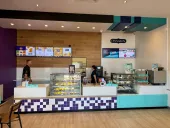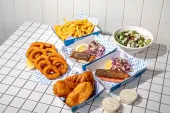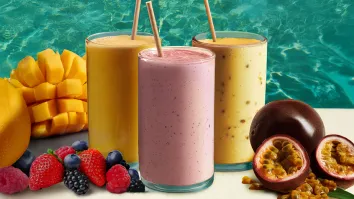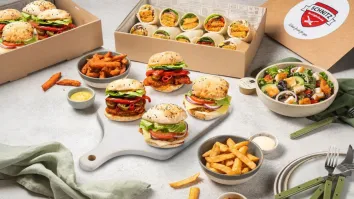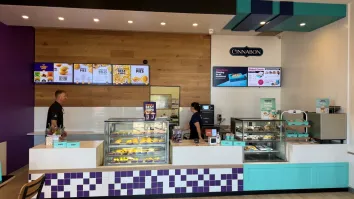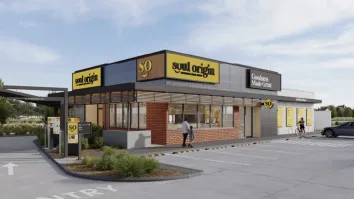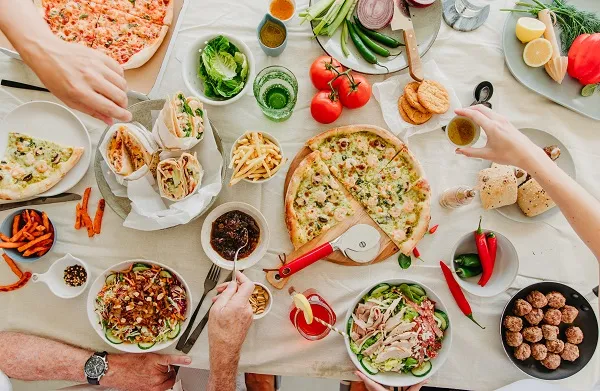
What makes Sandella's franchise model "sufficiently different", and why they are not partnering with aggregators
Founder Mike Stimola says he wants to have 50 stores in Australia in five years.
Sandella’s Flatbread Cafe’s upcoming entry to Australia, according to its founder and CEO, was a case of serendipity.
It was 1994 was when he founded the fast casual restaurant chain in Connecticut. Eventually, he lost most of the stores due to 9/11 weakening the economy. Sandella’s, however, was able to regroup and started franchising in 2000. It eventually made its way to the Middle East, selling franchises in Dubai, Turkey and Saudi Arabia. Currently, it has over 130 locations globally.
In an exclusive interview with QSR Media, Stimola shares his vision to have 50 stores in five years, their "sufficiently different" franchising model, and why social media is critical for their business.
QSR Media: What led to your decision to launch in Australia?
I had a couple stores in Connecticut then I opened my first store in New York City. When we opened it in New York, we started selling a lot more food. I ran the business in the United States up until the end of 2016 when I sold the operating side of the business to another company. I came to Australia because a group had reached out to me and said they wanted to buy the development rights to Sandella’s in Australia. I came to Australia to meet with them but decided they were really not the right people to work with.
But I liked the market. When I got here, I felt our brand was ahead of what was going on here in Australia in terms of the food business. We were five, six, years ahead of the curve, so it would be a good place to open up. I love the people, I just loved everything about Australia.
I also realized that the franchise model was broken here in Australia; it just seemed like franchisees are struggling and having a hard time making any money. It looked like the franchisors are making a lot of money, they just didn't leave anything for the franchisee to be profitable.
I know that the model that we have used [historically] is very different than that. We find the store for the franchisees, we sign the lease, we get the lease done, we build the store and then sell that completed model to the franchisee at our cost.
We make our money in royalties. We charge a 6% royalty on sales and that's it. We also charge 2% marketing fee that goes into a fund that is specifically geared to market the stores. We don't make money on everything else. We thought our model was sufficiently different and would be more appealing to franchisees here; our food was different. We thought this market would be a good place. That's why we came here.
How does Sandella’s plan to differentiate itself in an industry filled with chains selling bread-centered offerings?
Our concept is healthier than most concepts that are out there. We use very fresh ingredients that haven't been highly processed or manufactured. If you look at flatbread that Sandella’s sells, it has flour, water, salt; it's like a 2000-year-old recipe for bread.
We're not a fine dining, sit-down restaurant. But if you go to a salad and get food, our food will be way better than your typical quick service. Whether you're getting a wrap sandwich, hot panini sandwich, our pizza product, and our salads are all very healthy. They taste great, and they're fresh. The typical product in our stores can be made maybe [in] two or three minutes. I think we differentiate ourselves in that way.

Sandella's CEO Mike Stimola. Photo: Supplied
How important is social media to Sandella’s marketing strategy?
We use social media, Facebook, Instagram, etc, to introduce customers to our products. Customers can become part of our loyalty app that we use, which allows them to order online, so they can come and pick up their food. They can [also] order online and have it delivered.
Social media is what primarily drives our customer base, who tend to be younger. They're used to ordering everything on their mobile device. That kind of marketing is relatively inexpensive compared to traditional radio, print, billboard, that type of advertising. It's much more highly specific and personalized. That's kind of how we want to do it. We don't advertise to the masses.
You’re referring to the more digitally-savvy consumer, correct?
I think it's that age group. But it's also their parents, in some ways, because those kids are still big influencers. So I would say our core customer is that 25 to 30-year-olds.
Could you tell me why Sandella’s decided to create its own app and not be involved with third party delivery companies?
We were on a lot of college campuses and we were able to communicate with our customers in those markets because the kids all had mobile apps for their universities and we delivered on campuses and dorms. We have a model for delivering and we've been doing it for a long time.
I know there's a craze towards third party delivery here. But third party delivery is not profitable to the franchise. So we've invested in an app. We've done it before; we're developing it for Australia now. And that app allows our stores to deliver in a relatively close radius of one to two kilometers.
Do you foresee your own delivery service to take up, let us say, a third of your sales? Or would it be more?
Right now, the Middle East is a very big delivery market, especially in the summer when it's 50 degrees out. Delivery happens in Dubai much more frequently. So I say our delivery percentages in the Middle East is over 30%. I don't know where it's gonna will end up here [in Australia]; I'm assuming it'll be 20 to 25%.
Speaking of the Middle East, could you tell me more about your experience there? What learnings from the Middle East do you intend to apply to the Australian expansion?
Our customer base is, from a geographical standpoint, from all over the world. There's a very diverse population in Australia, there are a lot of tourists here. I think that allowed us to understand that marketplace and how to appeal to it.
My single biggest learning in Australia is that labor wages are way higher here than any place else in the world where we've operated. Your first feeling when you come here, and you see labor rates, are you like, “Wow, there's no way we can't work here.” But it's not true. You can work here and there's a higher price point here for our products.
But the other thing I like about it here is that I can have two full-time employees, and... they can live a really nice life. In the United States, and especially in the valley, the labor rates are way lower than somebody working in our store. It's really more of a part-time or supplemental job for some families, because the wages just aren't the same.
How many stores do you envision this year and in 2020? And could you tell us more about your five-year plan?
Okay, my goal is to have six doors open by the end of 2019. And I would like to build another dozen stores next year.
When I first came to Australia, I asked myself, “Can we build 50 stores in Australia?” because that's kind of the number for us. We feel comfortable that we can build 50 stores in Australia over the next five years.
This interview was edited for clarity and brevity.
